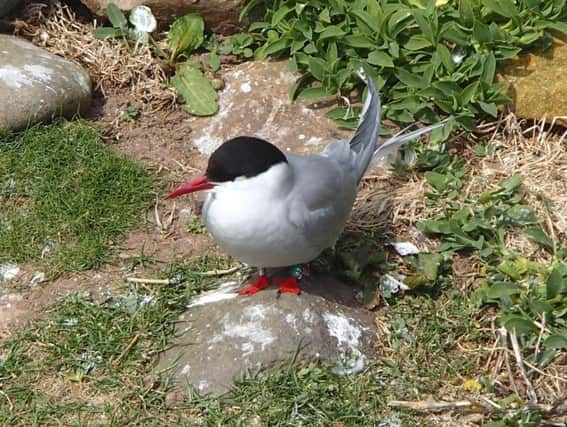Revealed: Seabird's amazing 60,000-mile migration between North East and Antarctica


The record-breaking Arctic tern, which weighs less than an iPhone, covered a mammoth 96,000km (59,651 miles) in its journey down to its winter home in the Weddell Sea before returning to the Farne Islands in Northumberland.
It was part of a study carried out by scientists at Newcastle University for BBC's Springwatch, which mapped for the first time the annual migration of the terns.
Advertisement
Hide AdAdvertisement
Hide AdLast year, 29 birds were fitted with geolocators by the researchers and have now returned to the islands to breed.
The previous record had been held by an Arctic tern that covered 91,000km (56,544 miles) on its flight from the Netherlands.
Dr Richard Bevan, from Newcastle University's School of Biology, said: "It's really quite humbling to see these tiny birds return when you consider the huge distances they've had to travel and how they've battled to survive.
"So far we've managed to catch 16 of our tagged birds from last year, and we've seen at least another four birds with our geolocators attached.
Advertisement
Hide AdAdvertisement
Hide Ad"We have been able to track our record-breaking Arctic tern as it flew down the coast of West Africa, crossed into the Indian Ocean and eventually arrived in Antarctica.
"Further analysis of the data from these trackers will allow us to get a better understanding of how the Arctic terns organise their migration and how global climate change may affect their routes."
The long-distance travelling tern flew down the west coast of Africa before crossing over to the South Indian Ocean and finally arriving in Antarctica, four months after setting off from Northumberland.
During its lifetime, it will complete this journey enough times to clock up around 3million km.
Advertisement
Hide AdAdvertisement
Hide AdLana Blakely, National Trust ranger on the Farne Islands, said: "Thousands of visitors flock to the Farnes every year to enjoy the remarkable wildlife.
"What our visitors don't always see is the scientific work that our rangers have been doing behind the scenes for over four decades to monitor wildlife on the islands."